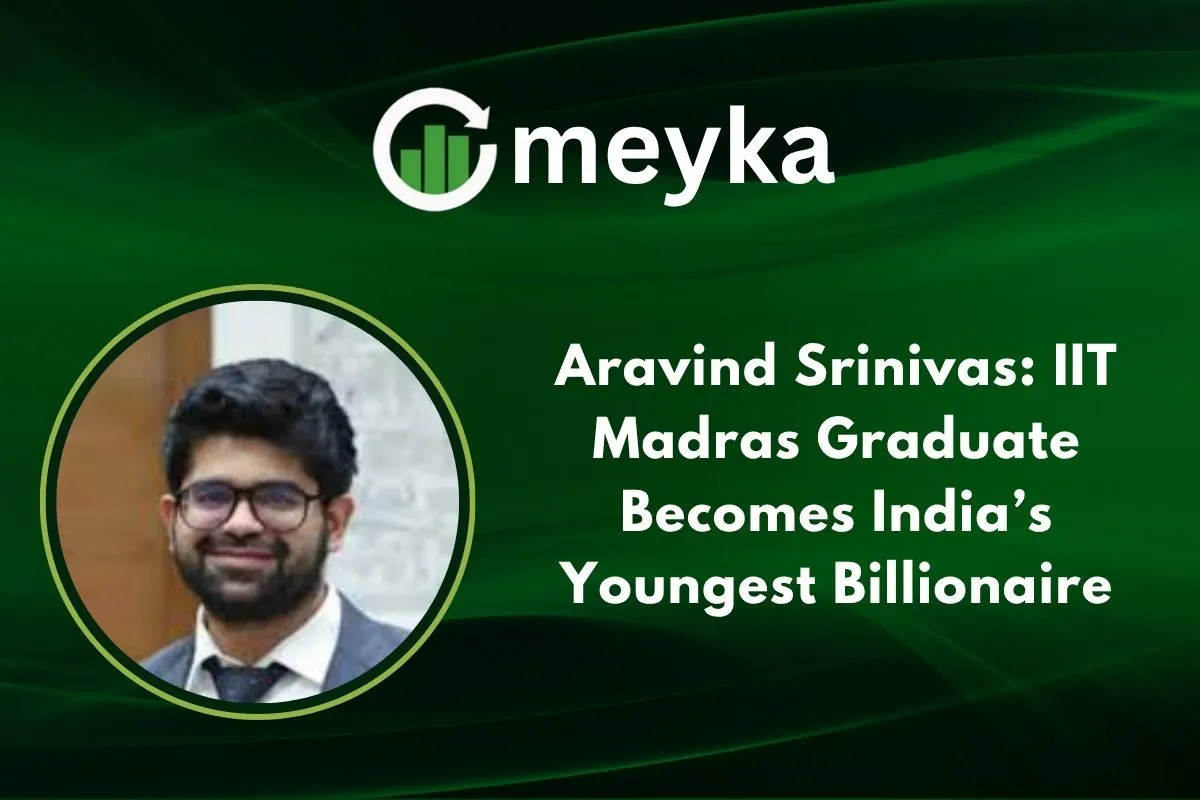Aravind Srinivas: IIT Madras Graduate Becomes India’s Youngest Billionaire
Aravind Srinivas has made history. At just 31, he is now India’s youngest billionaire. He achieved this through his AI startup, Perplexity. We see in his journey a mix of grit, bold ideas, and timely execution. His story signals more than personal success: it points to how India’s tech sector is maturing. What led him here? How did an IIT Madras graduate build an AI platform that competes globally? In this article, we walk through his life, work, impact, and vision.
Early Life and Education
Aravind Srinivas was born and raised in Chennai (formerly Madras). He comes from a family that valued education. From early on, he showed interest in science and computers. He earned dual degrees in electrical engineering from IIT Madras, graduating in 2017. After that, he pursued a PhD in Computer Science at the University of California, Berkeley, focusing on artificial intelligence.
Despite challenges, like switching from electrical engineering to AI topics, he persisted. He taught himself key tools (Python, machine learning) and engaged in competitive coding and research tasks.
IIT Madras Journey: Shaping an Entrepreneur
At IIT Madras, Aravind got exposure to rigorous technical training, peer competition, and startup culture. The environment encouraged innovation and hands-on projects. He joined research labs, competed in coding contests, and built prototypes. This period also helped him meet peers and professors who later influenced his thinking. The culture of solving hard problems and pushing boundaries stayed with him.
IIT Madras itself supports AI and deep tech research. Its centers in data science and AI also foster student startups.
Founding the Company
In 2022, Aravind co-founded Perplexity AI with Denis Yarats, Johnny Ho, and Andy Konwinski. The idea: build a smarter AI search engine that gives answers, not just links, and with verified sources.
The early days were not easy. They had to build algorithms, data pipelines, and a user interface. They also had to convince users and investors that a new search model could work. Over time, they won funding from prominent backers (including global investors) who believed in their vision.
The Road to Billionaire Status
By 2025, Aravind Srinivas entered the M3M Hurun India Rich List as the youngest billionaire, with a net worth of ₹21,190 crore. What drove this rise? Perplexity’s core product, an AI-driven conversational search, gained traction globally. Users liked its ability to fetch answers, cite sources, and cut down search time.
The startup’s valuation soared. Moreover, the shift in investor sentiment toward deep tech and AI gave it an advantage. In short: a strong product + market readiness + timing.
Role in the AI/Tech Ecosystem
Aravind and Perplexity are now seen as part of the frontier in generative AI + search. Their platform competes with global tech giants in a niche that blends search, language models, and knowledge graphs. He is contributing to how we access information, moving from traditional link lists to useful summaries with citations. This can reshape education, journalism, and how people use the internet.
In India, his success boosts confidence in home-grown AI startups. It shows that Indian founders can build deep tech with global impact, not just copy models from elsewhere.
Comparison with Other Young Entrepreneurs
How does Aravind differ from its peers? Many startup billionaires are in e-commerce, fintech, or apps. But Aravind’s path is in deep tech, a harder domain requiring research, infrastructure, and long development cycles.
Globally, he is among the youngest to reach billionaire status through AI. In India, he stands out as a contrast to founders who scaled through consumer products. His achievement is not just about scaling fast; it’s about building core tech.
His route may inspire a new class of entrepreneurs who opt for tech depth over market speed.
Impact on IIT Alumni and Startup Culture
We from the IIT community see in his story a beacon. Many alumni and students now believe that the institute can spawn not just service firms, but deep tech champions.
Campus incubation cells, hackathons, and research groups may see more interest in AI, foundational models, and experimentation. His success can also attract more investment into campus startups.
It pushes IITs (and all technical campuses) to align more with advanced research, not just coursework.
Future Plans and Vision
Aravind has indicated he wants Perplexity to remain independent, despite interest from big tech players. He has also mentioned planning an IPO after 2028. He aims to expand Perplexity globally, add new AI capabilities, and deepen the model’s reasoning, safety, and domain knowledge.
He often speaks about how AI should augment human knowledge, be trustworthy, and be accessible. He also highlights the need for diverse voices in AI, and not just tech elite perspectives.
Conclusion
Aravind Srinivas is not just another name on the billionaire list. He is a signal. His rise from Chennai to IIT to AI founder tells us how the rules of wealth and innovation are changing in India. For young engineers, his journey says: you can go deep, you can aim high, and you can build foundational technology from the ground up. For India, his success underscores a shift from service models to product, from imitation to original innovation.
As the next chapters unfold, with new AI products, global expansion, and influence in the startup world, we will watch how Aravind and Perplexity help shape what it means to build tech in this decade.
FAQS:
Aravind Srinivas is the co-founder and CEO of Perplexity, an AI search company. He studied at IIT Madras and later worked in artificial intelligence research before starting the company.
There are no confirmed reports about him getting a U.S. green card. Some people discuss it because he works in America, but nothing official has been shared by him.
Aravind Srinivas grew up in Chennai and studied at IIT Madras. He later moved to the United States for research in artificial intelligence and helped create Perplexity.
Disclaimer:
This content is for informational purposes only and is not financial advice. Always conduct your research.






